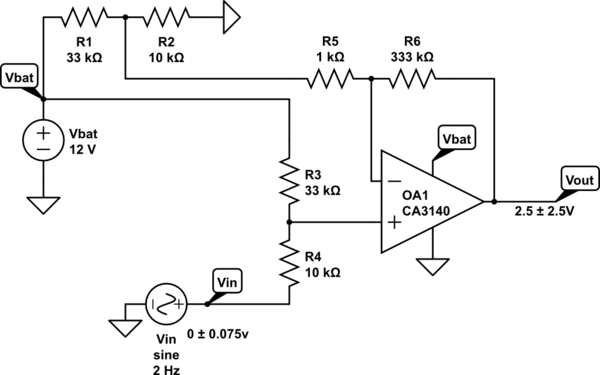I posted this circuit in a question about protection clamping, but got a lot of questions around the circuit itself.
Is this not a good / the normal way to shift and amplify a low amplitude (75mv) swinging around ground signal (simulated by Vin) to Vout: 2.5V amplitude signal swinging around ca 2.5V (2.79) ?
For the sake of simplicity Vbat is a stable, regulated 12v source.
Vin is a current sensor, so Vin is practically a DC signal.
The implementation of the circuit gave me a lower than expected center (ca 1.8v) I guess that can explained by too low bias current?

simulate this circuit – Schematic created using CircuitLab
